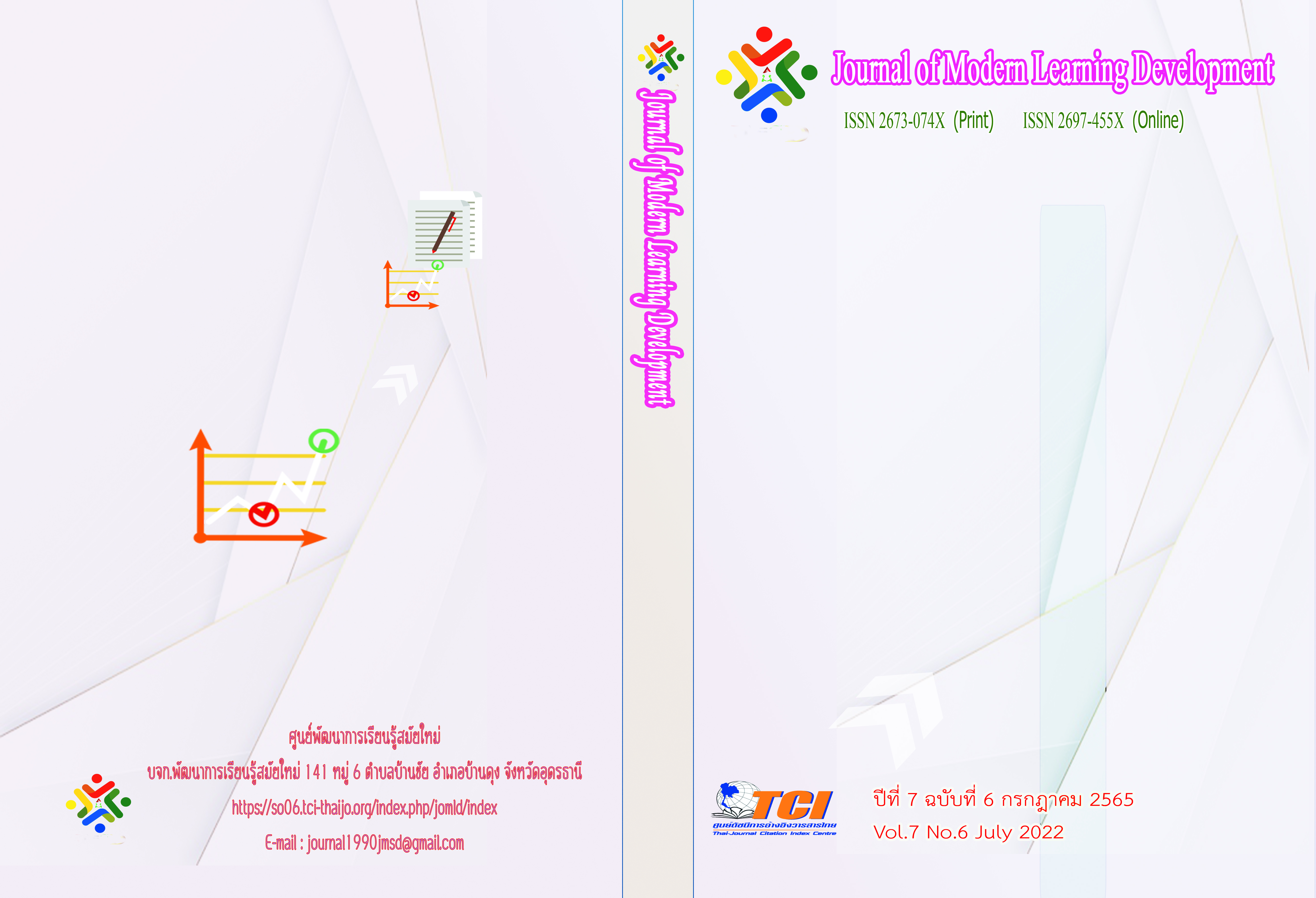The Language Issues on Isan Folk Music Study Responding Music Cultural Research in the 21st Century
Main Article Content
Abstract
The current study was conducted in a qualitative design. The purposes of the study were to the problems of language uses in studying Isan folk music responding music cultural studies in the 21st century and need of language uses in studying Isan folk music responding music cultural studies in the 21st century. The 12 samples in this study included scholars in music, instructors, teachers, local philosophers, students with Batchelor's degrees and master's degrees. Purposive sampling was used in sample selection. The data were collected using a focus group discussion and analyzed by content analysis.
The results of the study were as follows.
1. In terms of the problems of language uses in studying Isan folk music responding music cultural studies in the 21st century, difficulties in explaining playing techniques following music theories, informing historical background of terms, demonstrating instrument components, using technical terms, and updating information were found.
2. In terms of problems of language uses in studying Isan folk music responding music cultural studies in the 21st century, it was found that there were needs in an update information that can be used in comparing playing techniques of Isan music to western music theory, summarizing term historical background, explaining components of instruments, and studying music technical terms.
Article Details
References
กฤษณา ศักดิ์ศรี. (2534). องค์การกับมนุษยสัมพันธ์. กรุงเทพมหานคร: อักษรวิทยา.
เฉลิมศักดิ์ พิกุลศรี. (2536). วิธีการศึกษาดนตรีพื้นบ้านอีสาน. ขอนแก่น: คณะศิลปกรรมศาสตร์มหาวิทยลัยขอนแก่น.
ณัชชา โสคติยานุรักษ์. (2549). ทฤษฎีดนตรี. (พิมพ์ครั้งที่ 6). กรุงเทพมหานคร: สำนักพิมพ์จุฬาลงกรณ์มหาวิทยาลัย.
ปิยพันธ์ แสนทวีสุข. (2549). ดนตรีพื้นบ้านอีสาน: คีตกวีอีสานตำนานเครื่องดนตรีและการเรียนดนตรีพื้นบ้านอีสาน. มหาสารคาม: อภิชาติการพิมพ์
พวงรัตน์ ทวีรัตน์. 2540. วิธีการวิจัยทางพฤติกรรมศาสตร์และสังคมศาสตร์. กรุงเทพมหานคร: สำนักทดสอบทางการศึกษาและจิตวิทยา มหาวิทยาลัยศรีนครินทร์วิโรฒ.
วีณา วีสเพ็ญ. (2533). ดนตรีพื้นบ้านอีสาน. มหาสารคาม: ศูนย์ศิลปวัฒนธรรมภาคตะวันออกเฉียงเหนือ.
อุดม พรประเสริฐ. (2546). ภาษาและการสื่อสารทางธุรกิจ. กรุงเทพมหานคร: สถาบันราชภัฏสวนดุสิต.
Baydak, A. V., Scharioth, C., & Il’yashenko, I. A. (2015). Interaction of Language and Culture in the Process of International Education. Procedia - Social and Behavioral Sciences, 215, 14–18. https://doi.org/10.1016/j.sbspro.2015.11.567
Eunson, B. (2015). Communicating in the 21st Century (4th Edition). New Jersey:
John Wiley & Sons.
Gerber, T., & Gerrity, K. W. (2007). Attitudes of music educators toward the teaching of language reading dkills in the music classroom. Bulletin of the Council for Research in Music Education, (173), 71–87.
Thinley, D., & Maxwell, T. W. (2013). The role of English in culture preservation in Bhutan. Journal of Bhutan Studies, 28, 1–29.


